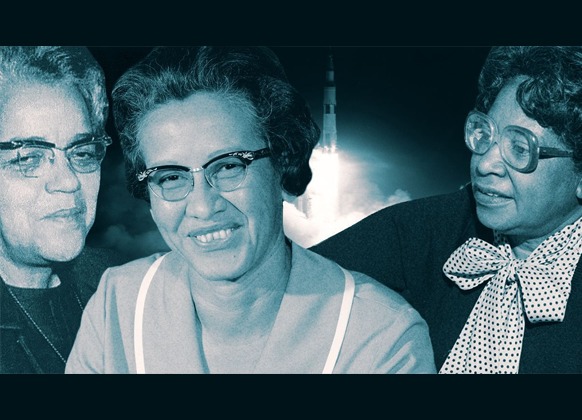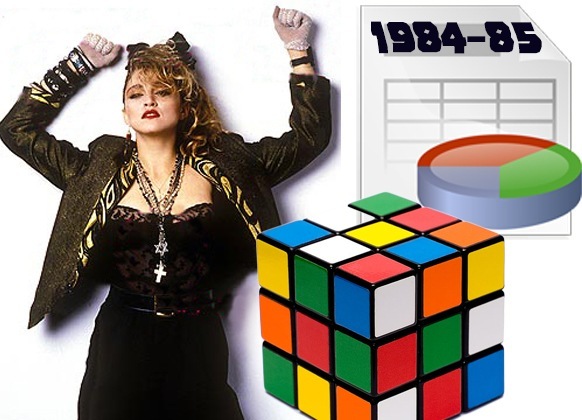Hidden figures and why we should challenge all forms of discrimination

Everyone has been talking this week about racism, with Trump’s travel ban and some pretty shocking stats uncovered by Monday’s BBC’s inside out programme, which found that a man called Adam was three times as likely to get an interview as a man called Mohammed based on the same CV.
Talent can come in any gender, race and age. I was fortunate to get a preview of a new film, Hidden Figures, this week, before it’s general release next Friday, which really brought this point home.
Despite the disheartening stats from Monday, it did show that the best talent can rise to the top no matter what the challenges are. It’s an incredible true story of diversity, challenge and overcoming all of that to succeed anyway! I hope that my readers enjoy the stories of these three incredible women who laid the path for other women to follow.
In the days before computers, complex trajectory calculations were done manually by a group of advanced mathematicians called ‘calculators’.
In racially segregated Virginia, where Langley Laboratory was based, there was a white group (East) and a black group of women (West) who were each allocated calculating tasks. The films tells the story of three of them, and how they overcame racism and sexism to rise to the top at NASA (although when they started it was known as NACA). Segregated and discriminated against in terms of wages, opportunities and even bathrooms, they nevertheless rose to the top of their respective careers.
Dorothy Vaughan – the first black supervisor at NASA
Math genius Dorothy Vaughan joined NASA’s Langley Memorial Aeronautical Laboratory in 1943, during the height of World War II, leaving her position as the math teacher at Robert Russa Moton High School in Farmville, VA to take what she believed would be a temporary war job.
Dorothy Vaughan was assigned to the segregated “West Area Computing” unit, an all-black group of female mathematicians, who were originally required to use separate dining and bathroom facilities. Over time, both individually and as a group, the West Computers distinguished themselves with contributions to virtually every area of research at Langley. She became the first black supervisor and one of the few female supervisors within NASA.
Engineers valued her recommendations as to the best “girls” for a particular project, and for challenging assignments they often requested that she personally handle the work.
In the early days of computing, Dorothy realised her skills as a mathemetician could become obsolete, so she taught herself, and her team the FORTRAN programming language – though she had to steal a book from the library to do it, because there were no programming books in the segregated black section of the library. Dorothy Vaughan became an expert FORTRAN programmer, and she also contributed to the Scout Launch Vehicle Program.
Dorothy Vaughan retired from NASA in 1971.
Mary Jackson – NASA’s first black female engineer
Mary Jackson worked under Dorothy Vaughan, the unofficial supervisor in the segregated West Area Computing Section, where she was assigned to work for for engineer Kazimierz Czarnecki in the Supersonic Pressure Tunnel. Czarnecki was impressed and encouraged Jackson to undergo training so that she could be promoted to an engineer – not only unusual for women at that time, but unheard of among African-American women.
Mary was unable to take graduate-level courses in math and physics to qualify for the job, purely because the only program was run by the all-white University of Virginia.
Undeterred, Mary took her case to court and when asked why, as a woman, she wanted to be an engineer, she told the judge ‘somebody has to be the first’.
Mary was granted the right to attend the white only college – but only night classes. Mary was promoted to aerospace engineer in 1958, and became NASA’s first black female engineer, and achieved the most senior title within the engineering department, but after 34 years took a demotion in order to serve as an administrator in the Equal Opportunity Specialist field. She served as both the Federal Women’s Program Manager in the Office of Equal Opportunity Programs and as the Affirmative Action Program Manager, and she worked to influence the career paths of women in science, engineering, and mathematics positions at NASA until her retirement in 1985. Mary’s work played a major part in NASA’s understanding of aerodynamics. Her ‘first’ carved the path for many other talented women who only needed the opportunity.
Katherine Johnson – the first woman to receive credit for a NASA research report (and ‘the girl’ John Glenn trusted more than a computer)
Katherine Johnson made her mark quickly on joining Dorothy Vaughan’s office, being assigned within 2 weeks to a project in the Maneuver Loads Branch of the Flight Research Division. She spent four years analyzing data from flight test, working on the investigation of a plane crash caused by wake turbulence.
In 1957, Katherine provided some of the math for the 1958 document Notes on Space Technology, a compendium of a series of 1958 lectures given by engineers in the Flight Research Division and the Pilotless Aircraft Research Division (PARD) and also did the trajectory analysis for Alan Shepard’s May 1961 mission Freedom 7, America’s first human spaceflight.
Despite the prestige of her role, Katherine did not get equal treatment, as a black woman, there were no bathroom facilities for ‘coloureds’ and she had a half hour walk just to go to the toilet. Similarly, she could not use ‘white’ coffee facilities when she first started work. However, as time progressed segregation was eliminated from NASA.
In 1960, she and engineer Ted Skopinski coauthored Determination of Azimuth Angle at Burnout for Placing a Satellite Over a Selected Earth Position. It was the first time a woman in the Flight Research Division had received credit as an author of a research report.
In 1962, as NASA prepared for the orbital mission of John Glenn, a vast computer network had been programmed with the orbital equations that would control the trajectory of the capsule in Glenn’s Friendship 7 mission, from blast off to splashdown, but the astronauts did not trust the computers, which were prone to hiccups and blackouts. They did, however, trust Johnson.
John Glenn: “Get the girl”
As a part of the preflight checklist, Glenn asked engineers to “get the girl”to run the same numbers through the same equations that had been programmed into the computer, but by hand, on her desktop mechanical calculating machine. “If she says they’re good,’” Katherine Johnson remembers the astronaut saying, “then I’m ready to go.” Glenn’s flight was a success, and marked a turning point in the competition between the United States and the Soviet Union in space.
Katherine worked on the calculations that helped synch Project Apollo’s Lunar Lander with the moon-orbiting Command and Service Module, also worked on the Space Shuttle and the Earth Resources Satellite, and authored or coauthored 26 research reports. Katherine retired in 1986, after thirty-three years at Langley. “I loved going to work every single day,” she says.
In 2015, at age 97, Katherine Johnson added another extraordinary achievement to her long list: President Obama awarded her the Presidential Medal of Freedom, America’s highest civilian honor.
Credit to Wikipedia and NASA websites for biographies of these outstanding women
"
Articles from Lisa Baker
View blog
We've seen a big focus on pensions and retirement in 2016. · I'm only 49, so the time for my retirem ...

I'm seeing a lot on social media about Charlie Gard today. · Some of it is very negative towards Gre ...

As well as running HR News, I'm Head of Marketing for a software company called Codel Software, who ...
Related professionals
You may be interested in these jobs
-
Onshore-Offshore Laboratory Technician
Found in: Talent UK C2 - 22 hours ago
Geoquip Marine Bristol, United KingdomAre you seeking a role that combines onshoreand offshore laboratory responsibilities Look no further We arehiring an Onshore/Offshore Laboratory Technician to join ourLaboratory department atGeoquip Marine a leading Geotechnical siteinvestigation company dedicated to the renewabl ...
-
Depot Engineer
Found in: Jooble UK O C2 - 6 hours ago
Ganymede Solutions London, United KingdomDiesel Depot Engineer · 37,000 per annum + Overtime available + Monday to Friday · Are you an experienced engineer who enjoys working with your customers to solve engineering problems? Do you have the engineering and commercial know-how to effectively represent a global leading ...
-
Logistics Process Engineer
Found in: Jooble UK O C2 - 3 days ago
Sofidel UK Ltd Humberstone, Leicestershire, United KingdomThe Sofidel Group · The Sofidel Group is one of the leading manufacturers of paper for hygienic and domestic use worldwide. Established in 1966, the Group has subsidiaries in 13 countries – Italy, Spain, the UK, Ireland, France, Belgium, Germany, Sweden, Poland, Hungary, Greece, ...


Comments
Lisa Baker
7 years ago #3
Thanks Michael, I lived in Handsworth in Birmingham until I was 8, so a multi-cultural society is not new to me. It was actually quite a shock when we moved away from there as all my new classmates were white, I remember feeling a little perplexed! It's great you fought your own battles, and just because they aren''t as historic doesn't mean they are any the less of an achievement. We still have lots of battles to fight in terms of race, gender equality, disability equality and homophobia to be a truly equal society, but sometimes it is great to look back and see how far we have come as a society in a small space of time - thanks for the read and the follow!
Lisa Baker
7 years ago #2
Thank you David for your kind comments and for sharing. I have to say, the film made me cry in parts, it is a shocking part of human history but great to see that we are finally now able to recognise heroes like these women, and like Alan Turing, whose contributions have been hidden because of prejudice - glad to be able to tell a few more people their stories!
David B. Grinberg
7 years ago #1